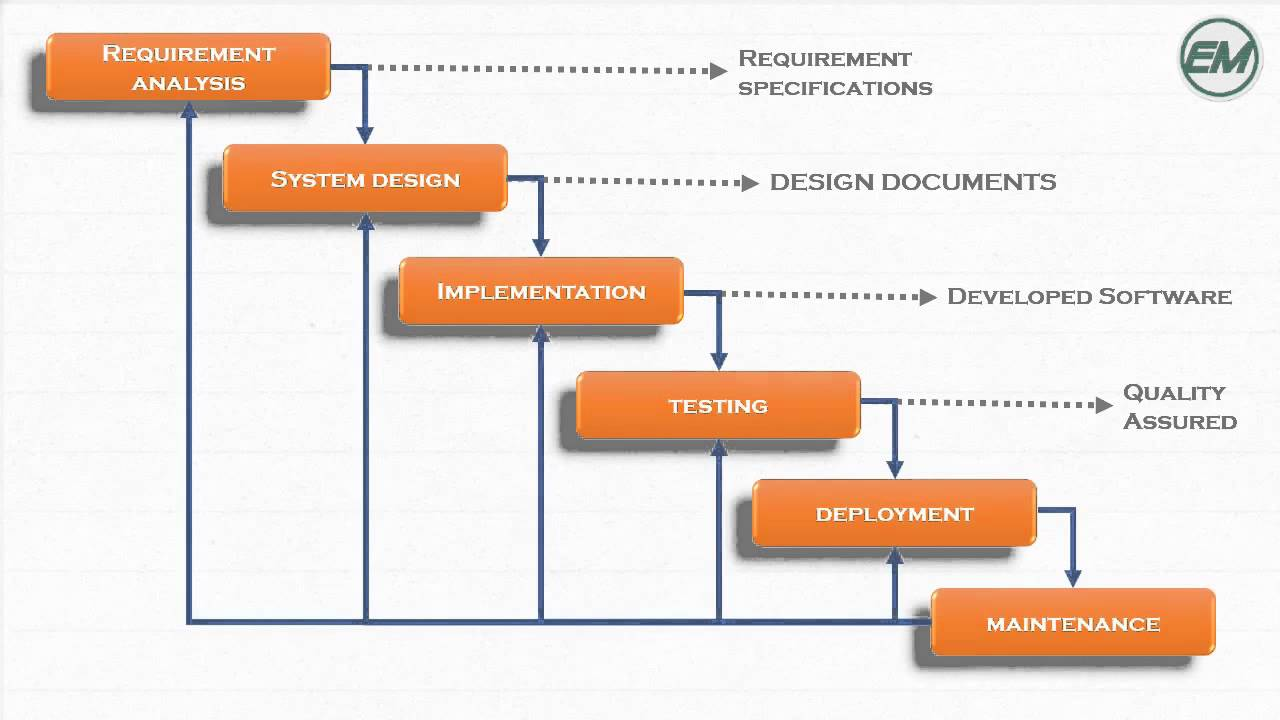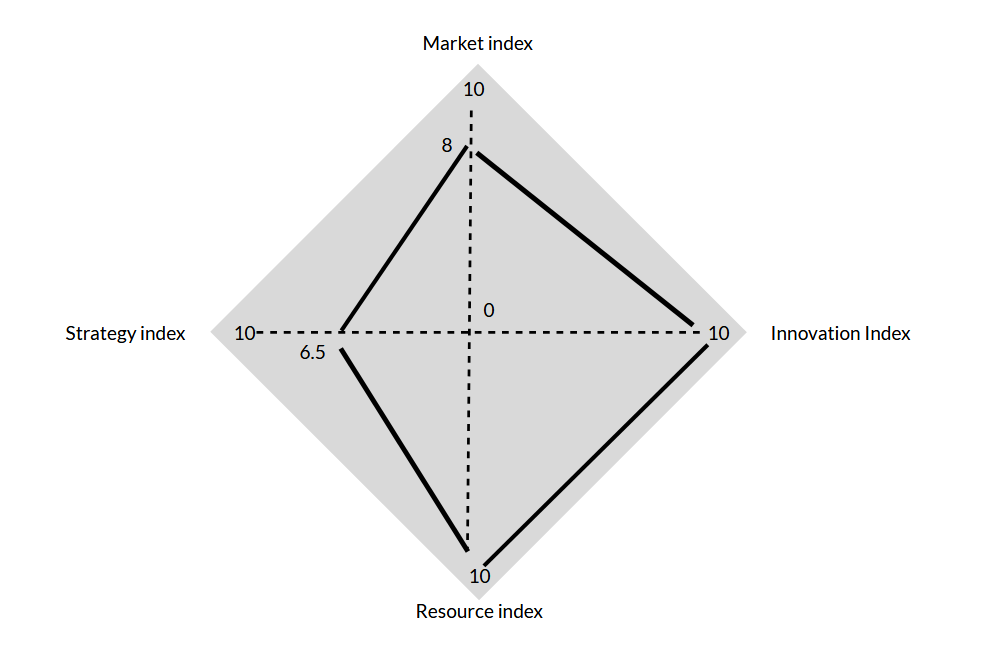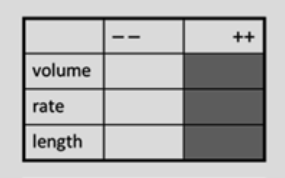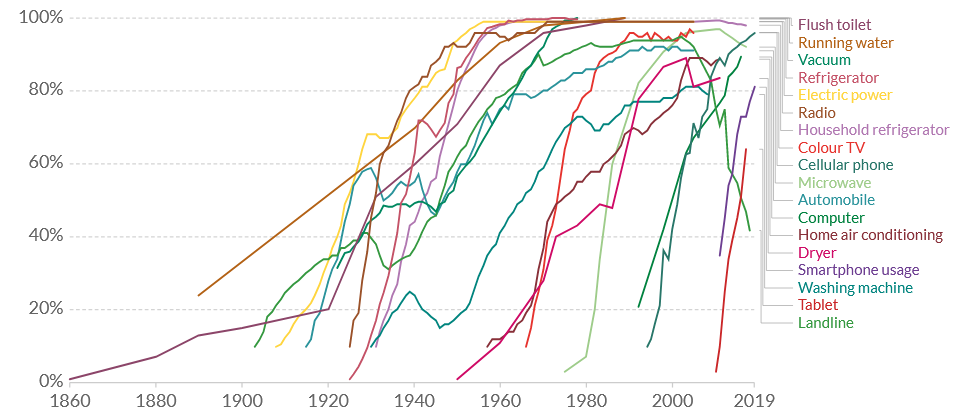Executive Summary
The present report proposes a new product in the field of robotics to Amazon, the world’s biggest online retailer. The Robot is a household aid that is an improvement compared to existing home robots that is likely to find its customer in a variety of market segments. A company that has historically capitalized on disruptive ideas, Amazon is more than prepared for adopting yet another innovation. This report’s estimations show high RENT scores, suggesting promising sales volumes, rate of margin, and product life lengths. However, certain considerations should be made regarding market fit and locating responsibility in an independent small organization.
Introduction
The objective of the present plan is to provide a comprehensive analysis and evaluation of the introduction of AI-powered home robots as Amazon’s next disruptive customer product. The Seattle-based, international e-commerce giant, Amazon is a household name known outside the United States and, probably, the most powerful player in the online retail market. In under thirty years, Amazon has attracted 150 million customers and reached 213 million unique monthly website visitors (Clement, 2020a). The company is known for a series of technological disruptions that brought it to the forefront of the industry.
Features such as one-click purchase that has now become commonplace were revolutionary back in the 1990s when Amazon developed and patented them. Nowadays, the US corporation has become a think tank for state-of-art technologies such as artificial intelligence (AI), machine learning, and robotics. AI-powered home robots may be yet another power move for Amazon that will meet customers’ constantly evolving needs and further boost the corporation’s competitiveness on the global market.
The present report starts with a description of the new product and its value proposition. The following section discusses the product development and commercialization process. It is critical to assess Amazon’s preparedness for technological innovation as well as identify all risks. Some considerations regarding innovation commercialization are included with a special focus on market adoption, technological implementation, and creating new market space. Lastly, the report provides a discussion of findings and a brief conclusion highlighting the main points.
Description of the New Product
An AI-powered home robot (further referred to as the Robot) is a waist-high robot that can nimbly move around the house and clean surfaces with a high degree of precision. It navigates home space due to multiple cameras empowered by computer vision and can be summoned or set to a particular mode by voice. The Robot is likely to become part of the home IoT (Internet of Things) system and synchronized with a mobile application. In the future, a single robot may become a security system for the entire IoT and manage other smart devices.
While the features are still up for debate, it is the value that the Robot will provide to customers. Of course, home robots are not exactly a new thing. Devices like the Roomba vacuum have been around since 2002 and found their audience in many countries around the world. The International Federation of Robotics (2019) reports that in 2019, there were 31 million robots helping people with home chores around the world. Their popularity surpasses that of entertainment robots, and they have the potential of being adjusted to assist the elderly and handicapped with their day-to-day errands.
Despite the presence of a few solutions on the market, Amazon’s product may be a step forward. Computer vision and artificial intelligence will make the Robot a precise multitasker that is able to learn from its own experience and improve performance. Besides, in the US, it may be an excellent market fit because 14.1 million Americans already use robotic vacuums and may be interested in an upgrade (Host, 2020). Amazon has the strongest presence in the US and will use resources to market it to Americans first.

There are three main models used to systematically manage risk during the development and commercialization stages of innovation: the new product development and commercialization (NPDC), the stage-gate, and the lean startup. All the models serve the same purpose of managing innovation, risk, and uncertainty, and all of them have both advantages and disadvantages. The lean startup model allows for interactive communication with customers and involves them in the value creation process.
However, making a new product “lean” requires a hectic pace of development at work, which may demotivate the team (Yordanova, 2018). In addition, as emphasized by Yordanova (2018), the product is often far from being complete and rather comprises a set of features that are constantly tested in real-time. While it may be acceptable for software, allowing more uncertainty in robotics may have more grave implications.
The new product development and commercialization (NPDC) process is dramatically different from the lean startup model. The NPDC is structurally straightforward and includes three phases: ideation, development, and production. Its distinctive feature of the NPDC is the constant interaction of technical/ production and marketing/ business development teams (Dima & Maassen, 2018). For all its advantages, this model is characterized by rigidity. It does not contain any guidelines on how to repeat processes or backtrack and start something anew (Dima & Maassen, 2018). Hence, the NPDC may as well be not appropriate for such growing and largely experimental fields as robotics and artificial intelligence.
In contrast, the stage-gate model, also referred to as phase-gate and waterfall, may be the best fit for developing the Robot at Amazon. Waterfall development has the flexibility of the lean startup model and the control of the NPDC (see Image 1 for a detailed structure) (Dima & Maassen, 2018). Nevertheless, one should keep in mind that the system of “gates” may easily become bureaucratic and inhibiting to developers’ creativity. Therefore, Amazon needs to find a balance between promoting creative freedom and keeping everyone involved in check.
Preparedness for the Technological Innovation

Innovation Diamond is a business development tool that assesses the four driving forces of successful new product development. Image 2 demonstrates Amazon’s Innovation Diamond with regard to the development of the Robot. As seen in Image 2, Amazon scores high on the market index (eight out of ten): it understands the value that the Robot may offer to customers and is sure that there is a market niche for household robotic devices.
While the pricing strategy may still be a work in progress, Amazon already has ideas about attracting the customer through price. Since 65% of Amazon users also use Amazon Prime, they will enjoy a discount and an opportunity to pre-order (Clement, 2020b). However, the company may not be sure whether potential users will have compatible technology at home to adopt the Robot, nor is it certain whether they will be able to safely test the new product before the adoption.
Innovation and resources are two inarguable fortes of Amazon, as demonstrated in Image 2. Innovation is already a major focus of Amazon and has been since its foundation in 1994. Because of its rich experience in putting forward revolutionary ideas, the US company already has prototypes, staff, and corporate procedures to manage innovation.
On top of that, Amazon has expertise in ensuring legal protection for its inventions: for instance, in 1999, it secured a patent for its one-click purchase technology that only expired in 2016. A company with 280 billion yearly revenue and offices in multiple countries have the resources to successfully launch the Robot. In contrast, Amazon’s strategy index may be far from desirable as many aspects such as legal compliances and complementary partners have yet to be clarified.
Return-Risk Analysis of the New Product
The RENT formula allows conducting a return-risk analysis of the new technological innovation. The only three variables needed to calculate the RENT score are volume of sales, rate of margin, and product life cycle rent.
- Volume = 4 [wide market adoption rate] + 5 [>$20 million in potential sales after three years]* + 4 [wide market segmentation diffusion]** = 13 (high)
- Rate = 4 [61-80%] + 4 [31-40%] + 4 [creates a new design which can become dominant] = 16 (high)
- Length = 3 [offers a new dominant design] + 4 [hard to copy] + 4 [hard to copy] = 11 (high)

Notes: *The estimated annual gross profit from sales is based on iRobot’s Roomba robotic vacuum figures. Ballve (2015) reports that iRobot sells around one million Roombas per year at an average price of $549, which makes the gross profit of around $549 million. Provided that Amazon’s advanced robot may be more expensive, the figure will surpass that of iRobot.
**Possible market segments include people working long hours, parents, the elderly, handicapped individuals, people with pets, and many others.
Therefore, one can calculate RENT as Volume x Rate x Length = 2,288. Based on the RENT configuration, Amazon’s Robot innovation is “Champion” with high levels of volume, rate, and length (see Image 3). “Champion” is a desired position on the market because it generates large revenues, promises rapid growth, and does not become “a flash in pan,” or a short-lived, hyped-up product.
However, the “Champion” status adds a level of complexity to Amazon’s management. According to Mazzarol and Reboud (2017), the external focus of innovation and its scale and scope brings about a great deal of uncertainty. To handle it, Amazon needs to invest in structured strategic planning.
Commercialization of the Technological Innovation: Some Special Considerations 3
Four Key Market Considerations for Commercializing Technological Innovation
- Consider the readiness of the market. The two important factors two consider are the Internet penetration of markets, users’ digital literacy, and familiarity with technology. In North America, the European Union, and some developed Asian countries, Internet penetration reaches 90-95%. Home robots are used all over the world, though North America remains the primary market. Internationally, only 23% of adults are digitally illiterate, and this number is shrinking (Mammedowa & Pawlowski, 2018). Overall, the robotics market growth rate is estimated at a whopping 26%, which suggests a wider adoption of technology (Scerra, 2020).
- Consider the end-user. Basic models of the Robot will be intuitive enough to be used by anyone. More tech-savvy consumers may consider an upgrade to make the Robot the security system of their IoT and configure it to their liking;
- Existing market players. Home robots are not exactly a new idea. First and foremost, Amazon will have to compete with iRobot that has been around since 2002 and launched several generations of smart house devices.
- Market gaps. Amazon may forego direct competition with iRobot by offering a new design. The Robot will literally be Alexa with a moving body and extended functionality that will not only serve for information retrieval and entertainment but also for doing chores around the house.
Four Steps to Develop (Spot and Cultivate) Technological Innovation
- Scanning for disruption. Amazon should be able to scan for new technologies and identify disruptive solutions. Mazzarol and Reboud (2017) argue that it is the technical/ engineering employees who are more suited for this task than those working in marketing and business development. Luckily, the company hires around 36,000 engineers around the world and is currently looking into training 50,000 more to boost its manpower and disruptive potential (Kalache, 2017).
- Defining the significance of disruption. The anticipated trajectory of the new innovation may be in line with the dynamics of the robotics market on the whole: currently, it shows 26% yearly growth.
- Finding a market. Amazon’s share of the US e-commerce market is roughly 49%, which makes it easy to find market segments that would adopt the new technology (Clement, 2020a).
- Locating responsibility and keeping the disruptive organization independent. To nurture the creative spirit and keep the focus on the new product, Mazzarol and Reboud (2017) advise to either start a “spin-out” affiliate or at least build a small team that would manage innovation. It is not only perfectly doable but also a common practice at Amazon. Henry (2017) reports that in the last two decades, Amazon has acquired or invested in more startups than any other big corporation.
Three Critical Tests of Strategies to Implement Technological Innovation

- Customers were not able to do it themselves. The Robot needs to solve the customer’s specific pain point that could not be addressed earlier for the lack of money, skills, or available options. American Cleaning Institute (2018) reports that Americans spend an average of six hours a week, cleaning their houses. While existing robotics solutions do help to lighten the workload, home robots still have limited functionality. Amazon’s Robot may fill in this market gap by offering consumers a device that is easy to control and versatile enough to do a variety of chores;
- Customers will adopt a simple product. Image 4 demonstrates an almost exponential growth in technology adoption in the United States. Devices such as washing machines and microwaves show the highest growth rate, with the penetration approaching 100% after less than a decade since the initial introduction. The Robot shares important characteristics with the most successful technologies used ubiquitously in American households: it is simple to use and offers a solution to long-standing problems;
- The innovation is more effective than what customers already have or do. The lack of maneuvering is a common complaint about robotic vacuums like iRobot’s Roomba. Amazon can help solve this problem by improving its device’s navigation through machine learning and artificial intelligence.
Four key issues surrounding market adoption of technological innovation
Sometimes customers/users cannot evaluate new radical technology as they have no basis for making a judgment. Some of the market segments that Amazon plans to market iRobot to may indeed be less responsive than others. For instance, a robotic household helper may be a good purchase for an elderly person. However, 40% of elderly adults do not have even basic digital literacy, as in using a smartphone and going on social media (Fields, 2019).
The concept of a home robot powered by artificial intelligence may be bizarre to them, to say the least. In addition, consumers often have little experience to draw upon or compare against. While robots such as iRobot are popular in North America, customers may be confused about what benefits the Robot may have over Roomba, especially if the former is more expensive than the latter.
It is not entirely impossible that certain individuals may give it a go, which will launch the so-called “geek” effect. However, with the Robot, Amazon’s goal is not to bedazzle tech fans with an obscure high-tech device but to offer a simple solution to an average customer’s everyday problems. Another concern is introducing radical technologies into large organizations. However, as mentioned before, Amazon is a company for which innovation is its backbone if not raison d’etre. It has tailored solutions and enough resources and manpower to manage large-scale disruptive innovations and mitigate risks and uncertainty.
Creating a New Market Space for Technological Innovation
When creating a new market space for technological innovation, Amazon should consider two opposing approaches. The “red ocean” approach is based on environmental determinism: it suggests that the market size is limited, hence, the competition on the market is a zero-sum game. If a new company increases its market share, it does so at the expense of some other company. The Blue Ocean Strategy reframes market competition: it implies that the boundaries of the market size are arbitrary, and new companies can create “blue oceans” themselves.
In a way, Amazon’s Robot already promises to create a blue ocean: it is a home robot with an unmatched functional versatility that the robotics market has yet to welcome. The innovation not only meets customers’ needs, but it makes them aware of the needs they might have never paid thought to. Purchasing a “moving, cleaning Alexa” may not be a thought that crosses a potential consumer’s mind that often, but its presence on the market may lead them to think that they do indeed need such a device for themselves.
Discussion of Findings and Analysis
The findings of this report suggest that the Robot has a promising future and the potential to elevate Amazon to a new level. In particular, based on the data on existing home robot solutions, the Robot may resolve their longstanding issues such as impeded navigation. It is possible that the corporation will appeal to a multitude of market segments at once, including those that are not typically reachable by big tech companies such as elderly people. Creating a “blue ocean” is not off-limits either: even if customers did not express an explicit need for a “smarter, moving Alexa,” they might as well realize the benefits of the device upon testing.
For all the advantages, Amazon should look out for the possible drawbacks of the new product and its development and commercialization process. Wiggers (2019) opines that striking a chord with customers may be more of an art than an exact science. Even if the Robot is flawless from a technical standpoint, humans’ interaction with robots is often emotional and depends on the environment.
In addition, Amazon’s new product may not live up to the multifunctionality that it claims to have at its disposal. It is absolutely likely that the Robot will be the first one in a line of similar products, locking Amazon in for a long game. However, the corporation is no stranger to building on its previous innovations and investing in long-term plans.
Conclusion
Today’s technology market is ruled by disruption, not incremental change. Therefore, corporations that plan to stay afloat and gain an advantage over contenders have to learn how to scan for, develop, and manage innovations. This report is an innovation plan proposal to Amazon, the American e-commerce leader, and, probably, the most recognizable online retailer in the world.
Amazon has long capitalized on state-of-art technologies, and it is only natural to dip into robotics as its next move. The Robot, an AI-powered home robot, may be an instant market hit, replacing other household aid devices and turning Amazon into Champion of the market with high revenues, margin rate, and product life length.
References
American Cleaning Institute. (2018). 2018 ACI National Cleaning Survey results: Time spent cleaning.Web.
Ballve, M. (2015). The Roomba and the surprisingly big home robot industry.Business Insider. Web.
Clement, J. (2020a). Amazon – statistics & facts.Web.
Clement, J. (2020b). Amazon Prime – statistics & facts. Web.
Dima, A. M., & Maassen, M. A. (2018). From Waterfall to Agile software: Development models in the IT sector, 2006 to 2018. Impacts on company management. Journal of International Studies, 11(2), 315-326.
Fields, J. (2019). We are leaving older adults out of the digital world.TechCrunch. Web.
Henry, Z. (2017). Amazon has acquired or invested in more companies than you think — at least 128 of them.Inc. Web.
Holst, E. (2020). Installed base of robotic vacuum cleaners in the United States 2017-2019.Web.
International Federation of Robotics. (2019).31 million robots helping in households worldwide by 2019. Web.
Kalache, S. (2017). Filling Amazon’s 50,000 jobs means finding new ways to train software engineers in the U.S.Venture Beat. Web.
Mamedova, S., Pawlowski, E., & Hudson, L. (2018).A description of US adults who are not digitally literate.Web.
Mazzarol, T. & Reboud, S. (2017). Entrepreneurship and innovation (4th ed.). Springer.
Our World in Data. (2019). Technology adoption in US households, 1860 to 2019.Web.
Scerra, M. (2020). Global robotics market revenue 2018-2025. Web.
Wiggers, K. (2019). Amazon’s Vesta no-show highlights the challenges of home robots.Venture Beat. Web.
Yordanova, Z. B. (2018). Lean Startup method hampers breakthrough innovations and company’s innovativeness. International Journal of Innovation and Technology Management, 15(02), 1850012.